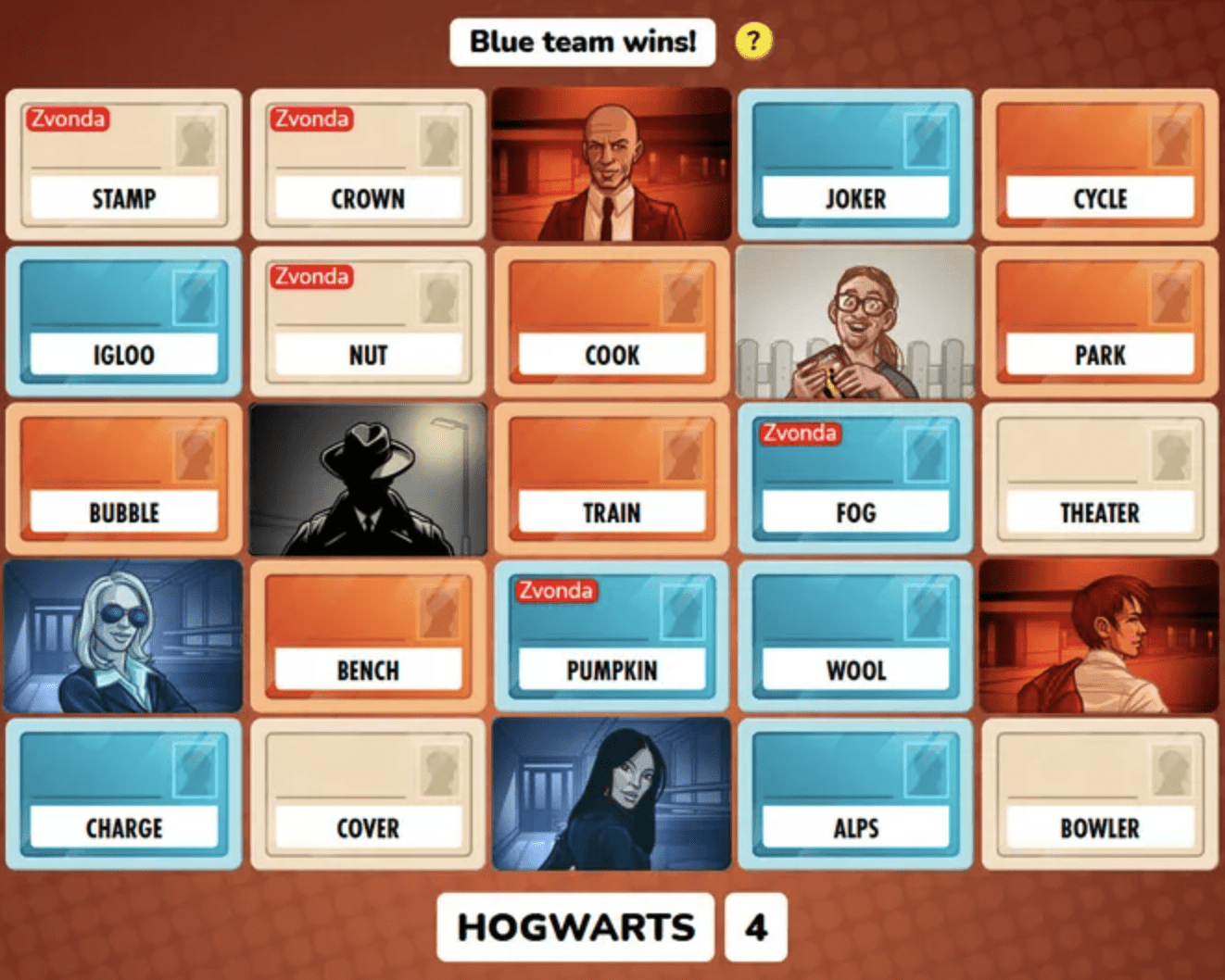The game I chose to examine for a comparative analysis was Codenames. Our game involves a mix of word-guessing-without-saying-the-actual-word, a time-pressure mechanic, and a sabotage and point-stealing mechanic. Codenames seemed like a fitting game to do a comparative analysis of because it incorporates the similar mechanic of word-guessing while giving minimal hints but is different enough from our game in that it requires one-word clues as a broadly thought category to encompass as many words as possible.
Codenames is played by 4 or more players split into two teams (red and blue), and they guess words based on clues from teammates. One player is the spymaster (the one who comes up with the clues) and the others are field operatives. 25 cards containing words are laid out in a 5×5 grid – some represent red agents, some blue, one assassin/bomb, and others are bystanders. The spymasters must help their operatives guess the correctly colored squares while avoiding the bomb square and bystanders. The spymaster gives a verbal clue containing a singular word and number, which represents how many cards fit the singular word clue. The operatives must find and flip over the words that fit or relate to the given clue while avoiding the other team’s cards, the assassin, and bystanders if possible. The game ends when the assassin is guessed or when all of the tiles for one team are flipped over.
They use the mechanic of hidden information and hints very well, providing just enough that the players must rely on thinking, communication, agreement, and extrapolation. There is risk and chance involved due to the assassin card and the possibility of giving the other team a point by flipping over their tile. Codenames provides several types of fun – mainly challenge (competition between teams, thinking and consensus within teams), some narrative (agents, spymaster, assassin), and fellowship.
The theme is reinforced through the graphics of agents and different colored tiles that convey the narrative. They handle “abuse” through penalty – for example, if one teammate is not cooperating or stubborn and results in flipping over the wrong tile, it may give the other team a point, end the current team’s turn, or flip over an assassin, resulting in losing the entire game.
As I was playing the game, I was thinking that a more constrained time pressure mechanic would be an interesting way to make the game a bit more tense and fast-paced. The spymaster has a time limit when choosing their clue, but the guessing phase on the field operatives’ part sometimes goes by pretty slowly. I was thinking that more emphatic user confirmation and consequence reveal could add more excitement to the game – e.g. adding in ominous music or a popping/swelling of the card if an opposite team’s card or the assassin is flipped over. Perhaps a narrative to go along with the game as it is being played would be interesting to see – e.g. cards have different characters drawn on them, and flipping over a card would contribute to “generating” an ongoing narrative, written on a side/bottom panel to immerse the player into the story more.



